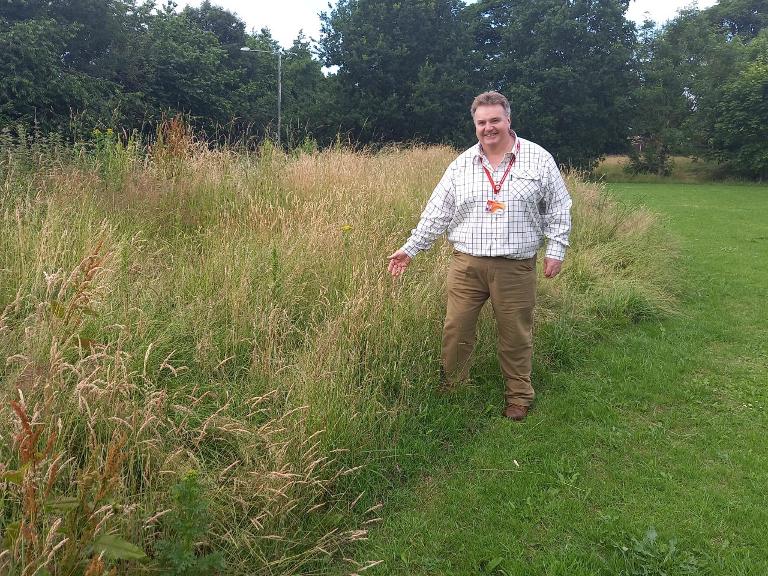Roadside verges across Chorley are helping to boost biodiversity

23 July 2021
On the verge! Roadside verges across Chorley are helping to boost biodiversity.
Wildlife Corridors, usually situated in verges of main thoroughfares, are playing a vital role in preserving and improving biodiversity across the borough.
Development of these areas began after Chorley Council declared a climate emergency in 2019 and decided to let nature take its course, with a helping hand.
These wildlife corridors are maintained and enhanced by the Council's Streetscene Team, who mow only a narrow strip of the roadside verge where required for the safety of motorists (instead of the whole verges) and let the rest flourish. Bulbs are often planted to supplement them.
Councillor Adrian Lowe, Executive Member of Chorley Council (Customer & Streetscene Services) said "The aim of these areas is to help improve biodiversity, which is essential and something we know is important to many residents. It's not about trying to cut costs or neglecting these areas, our team still visit these areas on a regular basis, like they did before, but they now do things differently."
Wildlife Corridors help to bridge the gap between habitats which helps to restore and preserve biodiversity, allowing movement between important habitats to maintain genetic diversity in wildlife populations.
Councillor Mark Clifford, Chorley Council's Champion for Environment and Green Space said: "These areas are absolutely vital to our ecological processes. They provide a range of benefits, such as habitats and access to food for our wildlife and pollinators, enhancing biodiversity. We must continue to do what we can to give these areas a helping hand."
In addition to these, Chorley Council have planted over 40 wildflower mini meadows across the borough which are currently in full bloom, providing habitats and food for a variety of insects and pollinators.
Wildlife corridors can often be identified by a red butterfly sign and wildflower meadows with a yellow bee sign.
More information about Chorley Councils Climate Change Programme can be viewed on the climate change section of the website.
Councillor Mark Clifford, Chorley Council's Champion for Environment and Green Space at the site of a wildlife corridor on Osborne Drive, Clayton Brook




